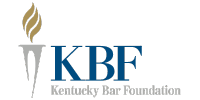2018 Blueprint for Kentucky's Children Policy Priorities and Fact Sheets (KYA)
The Blueprint for Kentucky’s Children is a coalition of non-profit, public, and private organizations that speaks with a common voice to create brighter futures for Kentucky kids. The Blueprint stands on three pillars: thriving communities launch strong families, strong families launch successful kids, and successful kids launch a prosperous future for Kentucky. This resource includes fact sheets and explanations of policy priorities.
As You Are: Resource Library
For LGBTQ individuals — especially for young people — family and community acceptance can change everything. Included in this resource library are just some of the hundreds of resources available to LGBTQ youth and their families, caregivers, educators, and allies.
The Brain Architecture Game
The Brain Architecture Game is a tabletop game experience that builds an understanding of the powerful role of experiences on early brain development – what promotes it, what derails it, with what consequences for society. The game is a 75-90 minute experience optimized for groups of 4-6 people per table. It can be played in small workshops, conferences, and large events, with as few as 8, or as many as 300 participants.
Child Welfare Trauma Training Toolkit
The Child Welfare Trauma Training Toolkit course from the National Child Traumatic Stress Network centers around the Toolkit which teaches basic knowledge, skills, and values about working with children who have experienced traumatic stress and who are in the child welfare system. The toolkit guides practitioners and others in supporting children’s safety, permanency, and well-being through case analysis and corresponding interventions tailored to them and to their biological and resource families. This comprehensive training curriculum includes a Trainer’s Guide, Appendices, Slidekit, Participant Manual, Supplemental Handouts, recommended reading and resources, Comprehensive Guide, and an accompanying CD-Rom. (Requires creating a NCTSN account.)
Fostered or Forgotten (Teen Vogue)
The Juvenile Law Center worked to place a series of articles in Teen Vogue during National Foster Care Month. The article, "How Foster Care Works in the United States," also includes a reference to Jackie Robles, a former foster youth who was a 2016 National CASA Akerman Scholarship recipient.
GrandFamily Guide
Children, Inc. has created a guide of community resources to help ease the strain of kinship caregivers and improve quality of care and family outcomes. The information provided is a step-by-step guide on raising grandchildren, specifically in Kentucky. The resources provided on this website will walk grandparents through: first steps, health, finances, nutrition, education, emotional needs, navigating the legal system, and other resources for taking on the role of a primary caregiver.
House Bill 1 Overview (KYA)
In April 2018, Governor Bevin signed House Bill 1 into law, effectively overhauling Kentucky's child welfare system. House Bill 1 seeks to keep kids safe and improve how Kentucky responds to and supports families. It addresses policy change within the courts, within the Cabinet for Health and Family Services (CHFS), and within the organizations and agencies serving kids who come to the attention of the child protective services to ensure all the parts of the child welfare system and related policies work together and produce better outcomes for all involved. This summary from Kentucky Youth Advocates provides an overview of major components of House Bill 1.
National Center on Substance Abuse and Child Welfare - Child Welfare Training Toolkit
Helping Child Welfare Workers Support Families with Substance Use, Mental, and Co-Occurring Disorders Training Package was developed to educate child welfare professionals about substance abuse and mental health disorders among families involved in the child welfare system. It is intended to provide learning opportunities and baseline knowledge on substance abuse and mental health problems and interventions; motivate and facilitate cross-systems work; and incorporate cultural awareness and facilitate cultural competency in child welfare practice. This Training Toolkit was created in 2009. While most of the content is pertinent and valuable, some of the statistics and research are now outdated. If you are looking for training materials with more current data, please access the Online Training Tutorials (suggested for in-service), as they were updated in 2015.
National Child Abuse Prevention Month (2019)
Resources for National Child Abuse Prevention Month (April) 2019 are included in this guide. This was designed to support service providers as they work with families to promote child well-being and prevent child maltreatment. It focuses on protective factors that build on family strengths to foster healthy child and youth development.
The National Domestic Violence Hotline
The Hotline provides more than a listening ear. They want to empower you with information. Check out their lists of resources for victims and survivors, as well as facts about domestic violence in the United States. You can also read about domestic violence in the media and download their press kit in the Media Room.
Substance Abuse and Mental Health Services Administration (SAMHSA) Website
The Substance Abuse and Mental Health Services Administration (SAMHSA) is the agency within the U.S. Department of Health and Human Services that leads public health efforts to advance the behavioral health of the nation. SAMHSA's mission is to reduce the impact of substance abuse and mental illness on America's communities. On this site, there is information and statistics about mental health and substance use.
Three Fiscal Elements for Using the Family First Act
This one-hour webinar explores how to approach important considerations in financing prevention services under the Family First Prevention Services Act. Presenters preview a tool being piloted with several states that helps child welfare leaders analyze the fiscal implications of services for children and families.
Well-Being Indicator Tool for Youth
A new tool may help child welfare-involved youth gauge their individual well-being and develop an action plan for areas they would like to strengthen. The Well-Being Indicator Tool for Youth (WIT-Y) was designed by the Center for Advanced Studies in Child Welfare at the University of Minnesota to help youth aged 15–21 explore different aspects of their well-being. WIT-Y is for youth who are either currently or formerly involved with child welfare. In the event that a youth self-reports that he or she is in crisis in any of the eight domains, they will see text on their screen that will alert them of resources that can help.
Our Impact This Year
-
Counties Served
99
-
Children Served
3,376
-
CASA Volunteers
1,360
-
New Volunteers Trained
286





